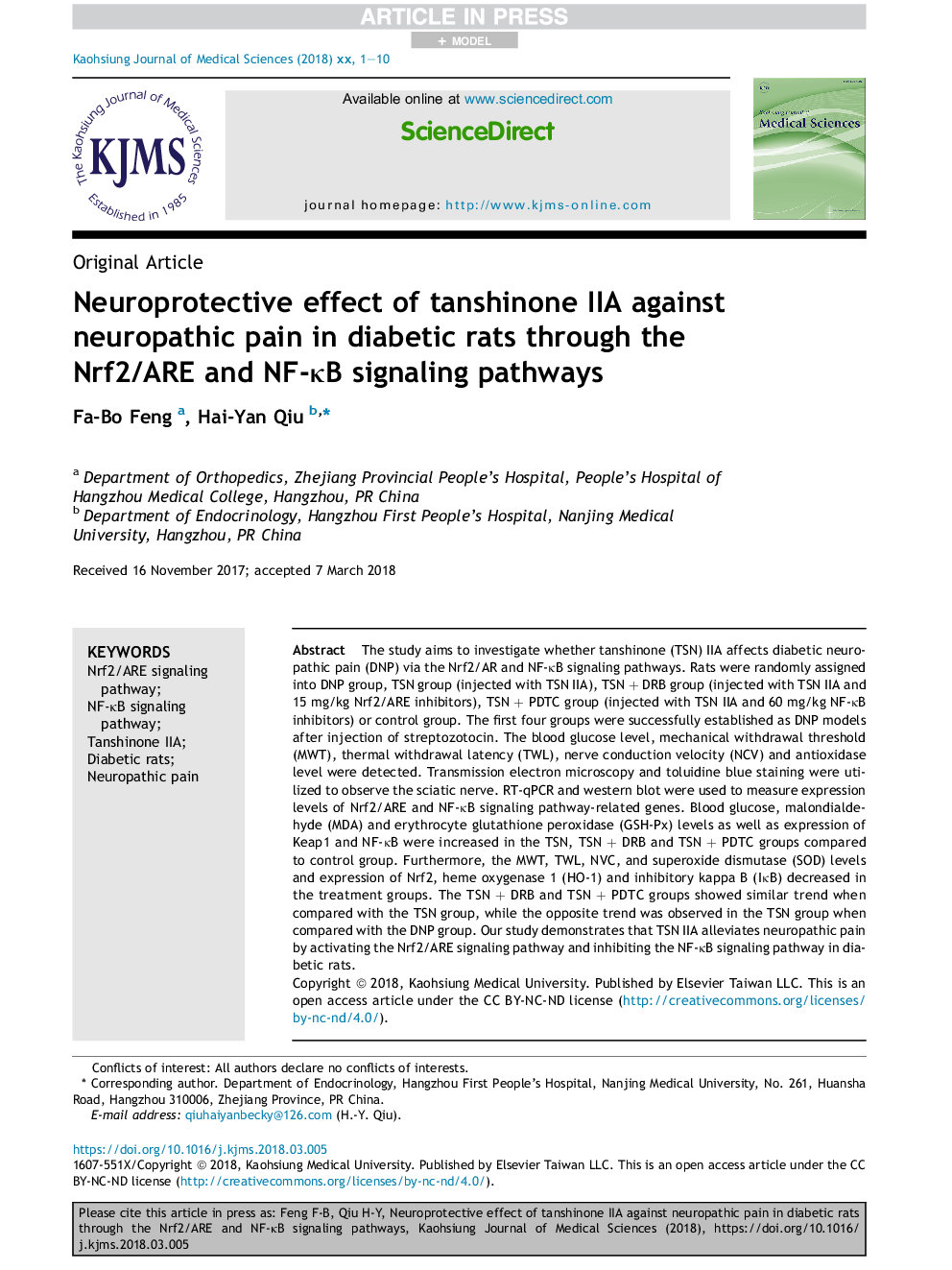| Article ID | Journal | Published Year | Pages | File Type |
|---|---|---|---|---|
| 8759548 | The Kaohsiung Journal of Medical Sciences | 2018 | 10 Pages |
Abstract
The study aims to investigate whether tanshinone (TSN) IIA affects diabetic neuropathic pain (DNP) via the Nrf2/AR and NF-κB signaling pathways. Rats were randomly assigned into DNP group, TSN group (injected with TSN IIA), TSN + DRB group (injected with TSN IIA and 15 mg/kg Nrf2/ARE inhibitors), TSN + PDTC group (injected with TSN IIA and 60 mg/kg NF-κB inhibitors) or control group. The first four groups were successfully established as DNP models after injection of streptozotocin. The blood glucose level, mechanical withdrawal threshold (MWT), thermal withdrawal latency (TWL), nerve conduction velocity (NCV) and antioxidase level were detected. Transmission electron microscopy and toluidine blue staining were utilized to observe the sciatic nerve. RT-qPCR and western blot were used to measure expression levels of Nrf2/ARE and NF-κB signaling pathway-related genes. Blood glucose, malondialdehyde (MDA) and erythrocyte glutathione peroxidase (GSH-Px) levels as well as expression of Keap1 and NF-κB were increased in the TSN, TSN + DRB and TSN + PDTC groups compared to control group. Furthermore, the MWT, TWL, NVC, and superoxide dismutase (SOD) levels and expression of Nrf2, heme oxygenase 1 (HO-1) and inhibitory kappa B (IκB) decreased in the treatment groups. The TSN + DRB and TSN + PDTC groups showed similar trend when compared with the TSN group, while the opposite trend was observed in the TSN group when compared with the DNP group. Our study demonstrates that TSN IIA alleviates neuropathic pain by activating the Nrf2/ARE signaling pathway and inhibiting the NF-κB signaling pathway in diabetic rats.
Related Topics
Health Sciences
Medicine and Dentistry
Medicine and Dentistry (General)
Authors
Fa-Bo Feng, Hai-Yan Qiu,
